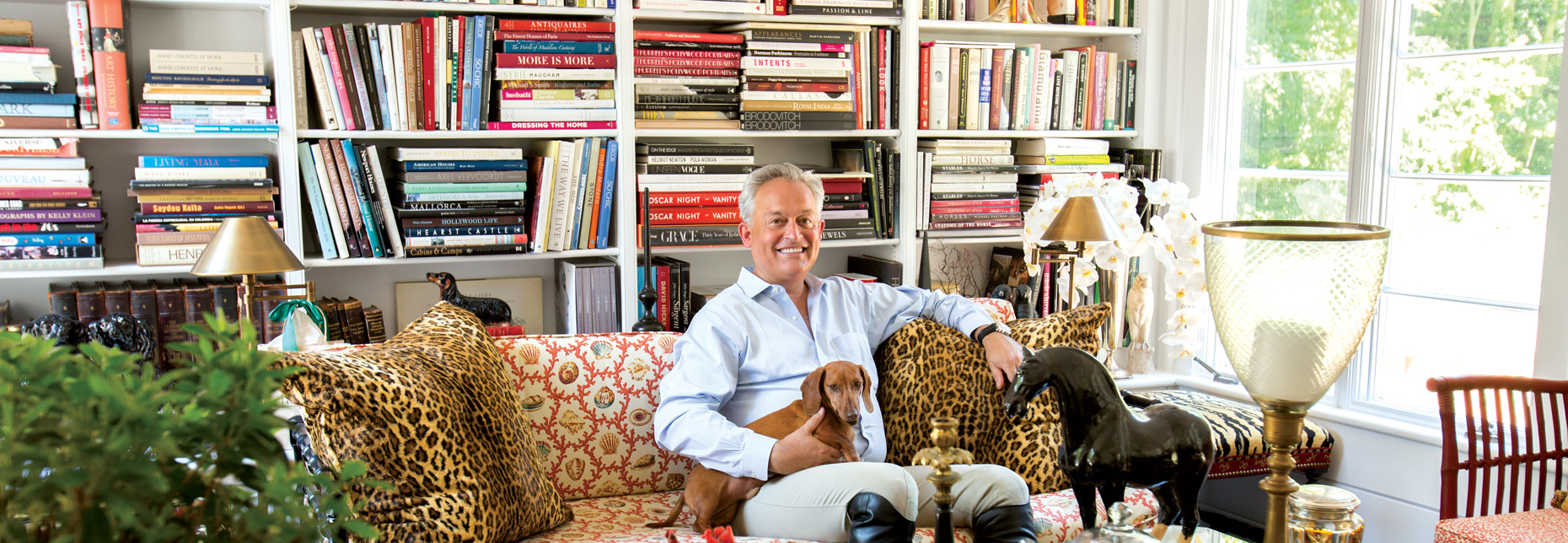Steeped in history, this idyllic location offers equestrians a top-class training barn, miles of trails, and a short ride to Manhattan.
PHOTOS BY George Kamper
Published Winter 2014
The Lure of Locust Valley, N.Y.
It would seem quite fitting that Mark Badgley, partner in the fashion-design house of Badgley Mischka, would gradually find his way to the charming village of Locust Valley, N.Y. The north shore of Long Island, also known as the Gold Coast, is steeped in a rich history that embodies the bygone Gatsby era. Locust Valley is a hamlet of gracious mansions, secluded estates, and exclusive country clubs. Horses graze on verdant hillsides, and the thunder of polo can be heard in the distance.

Some of the area’s original estates from the early 1920s have been broken up and subdivided, but many still stand, preserving the valley’s heritage of understated grandeur.
Badgley Mischka is primarily known for their red carpet and evening wear and it is easily possible to envision one of Badgley Mischka’s timeless gowns sweeping across the ballroom dance floors of yesteryear.
Mark Badgley and his partner James Mischka are in the company of prestigious families that once resided here. These families were not necessarily the attraction of Locust Valley, but impressive nonetheless. Familiar tycoons and political families such as Roosevelt, Vanderbilt, Morgan, Phipps, and Post had homes here as did artists and socialites, including C.Z.Guest, John Lennon, and Rudyard Kipling.
Mark and James’ decision to move to Locust Valley full time was a gradual process. They owned a farm in Lexington, Ky., for five years, and a home in New York City for 30 years, and rented in the Hamptons. They even chose to rent in Locust Valley before buying to see if full-time country living was right for them.
It was a culmination of circumstances that helped tip the scales. The quiet home they purchased was just minutes from Mark’s horses, trainer, favorite training barn (see Hunter’s Moon Farm), and a short, 30-mile commute to Badgley Mischka’s midtown Manhattan office.
Mark grew up in Oregon and started riding horses at a very young age. The demands of college, followed by building a world-class fashion business, left him little time for horses. He eventually found his way back to his beloved passion 15 years ago and has been riding and training in the hunter ring ever since.
Mark was a little apprehensive about riding again after such a long hiatus. “I missed it and I was stressed at the studio,” reflected Badgley. “It took one lesson and I was immediately hooked.” He currently has two hunters: Quantos, whom he rides and shows now, and Riviera whom he leases out. He also has a couple of retired horses that live in Lexington.
He finds solace at the barn. For him, it is therapeutic, calming, and a total escape. “I love the people and riding with close friends, but of course it’s always about the animal,” explained Mark.
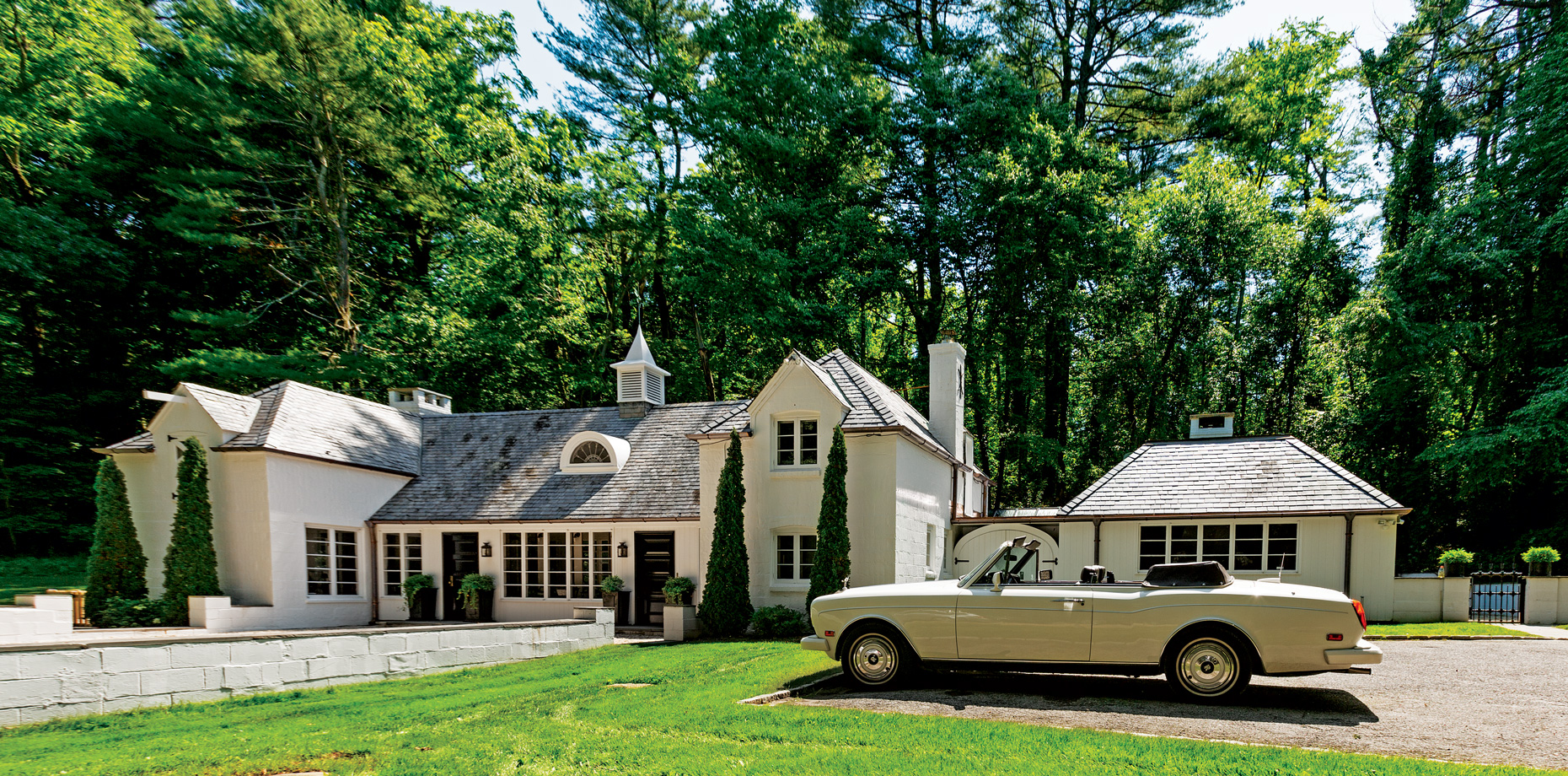
During the winter months Mark and James travel to Wellington, Fla., most weekends to participate in the plethora of winter equestrian events that take place there throughout the season.
Life in the Country
At the end of a winding, narrow, tree-lined lane edged by homes discreetly tucked into the landscape sits the carriage house of Mark and James. If one could sketch the perfect country residence for this remarkably talented design team, it might look something like this.
Originally a working carriage house built in 1910, it now feels fashionably chic without forfeiting its ties to the past. The house had been vacant for years and in need of a complete overhaul. Pairing their talents, Mark and James were able to conceptualize and execute the remodeling—doing most of the work themselves.
The house sits on six acres and is positioned against the backdrop of a thicket of trees. The pool, built in the 1940s and neglected for 40 years, was also part of the restoration.
The home’s interior is bright and airy, with charming architectural details. The master bedroom was once part of the hay-receiving area. The spacious room now features a cozy fireplace, a generous sitting area lined with bookshelves, and a sizeable loft office.
Contemporary and traditional furnishings mix harmoniously throughout—much like the rich blend of art and black-and-white photographs displayed on the walls. Tables are ornamented with an eclectic mix of books, candles, and intriguing objets d’art. Also fitting are the visual tributes to their horses and dachshunds, who are so much a part of their lives.
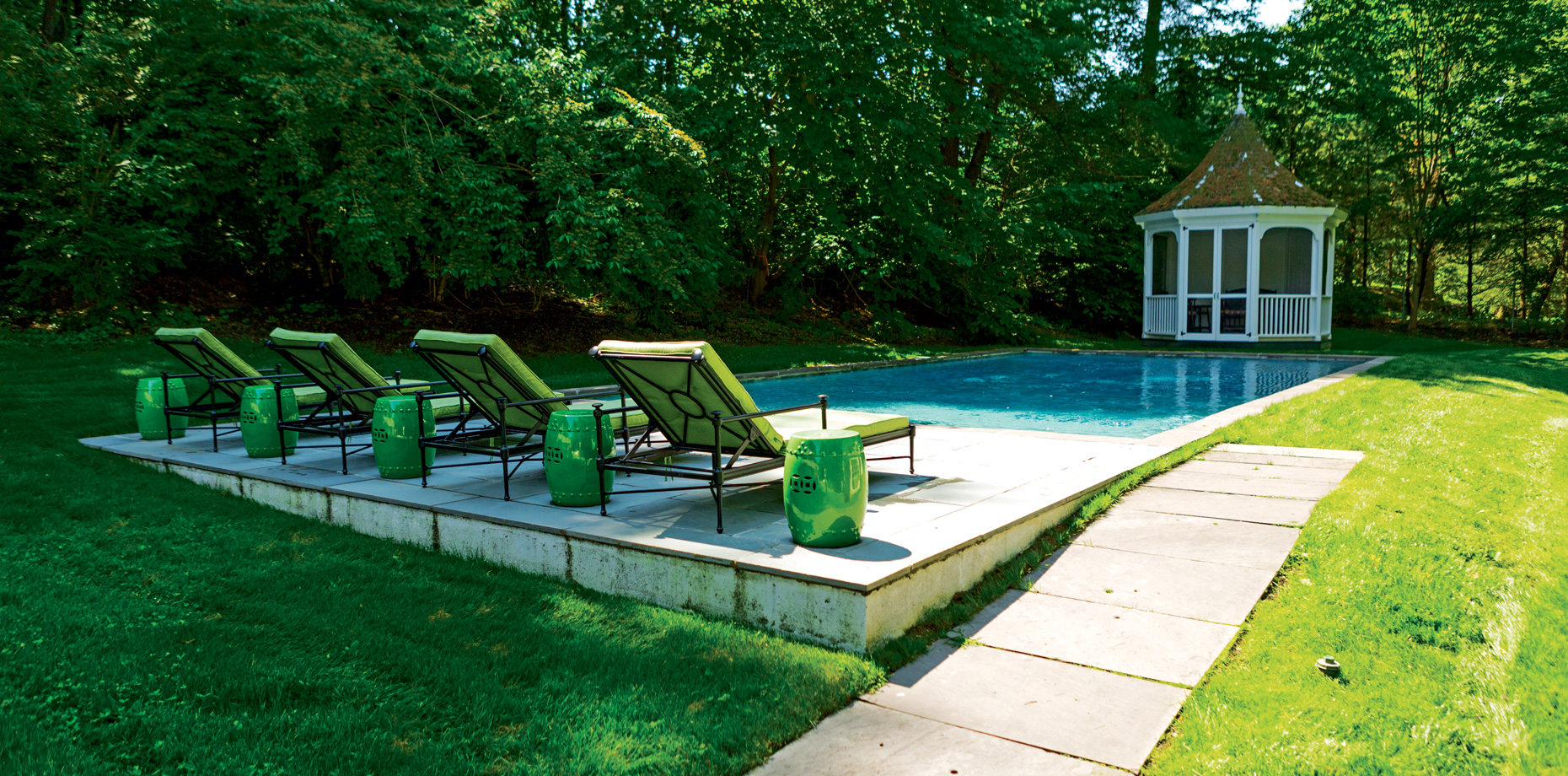
An Unwelcome Guest
Shortly after completing the renovation, Hurricane Sandy vented its wrath on the East Coast and caused major damage to the carriage house. Mark and James basically had to start over.
They rode out the storm, realizing too late that the country lane leading to the access road was blocked by more than 50 trees. Trees, ceilings, and walls crashed in on them. They had to literally climb over 3-foot-thick tree trunks to get to the living room, and two massive fir trees caused the bedroom walls to cave in.
But from the destruction came more enhancements, including replacing a long, low-ceilinged hallway with a bright, atrium-lit walkway.
Equestrian Fashion
It seemed appropriate to solicit Mark’s input on the topic of equestrian fashion—both in the ring and as everyday wear. “Equestrian apparel snakes its way into fashion and it’s coming again now,” explained Badgley. “Calvin Klein and Michael Kors practically showed authentic equestrian wear down the runway, and I understand it. It’s incredibly flattering. Most women who like a classic style can relate to it.”
When it comes to the hunter competition ring, “I’m a traditionalist. I don’t like too much experimentation and I prefer to be respectful to the sport,” Mark commented. “Everything else is so industrial and moves so fast. I think it’s charming that the horse world has this kind of heritage and is steeped in tradition.”
Mark has no desire to design an equestrian clothing line. On occasion he has designed his own competition jackets, but keeping up with the 20-plus product categories at Badgley Mischka keeps his focus elsewhere. Instead, he seems loyal to wearing custom-made Hadfield jackets and Vogel and Der Dau boots.
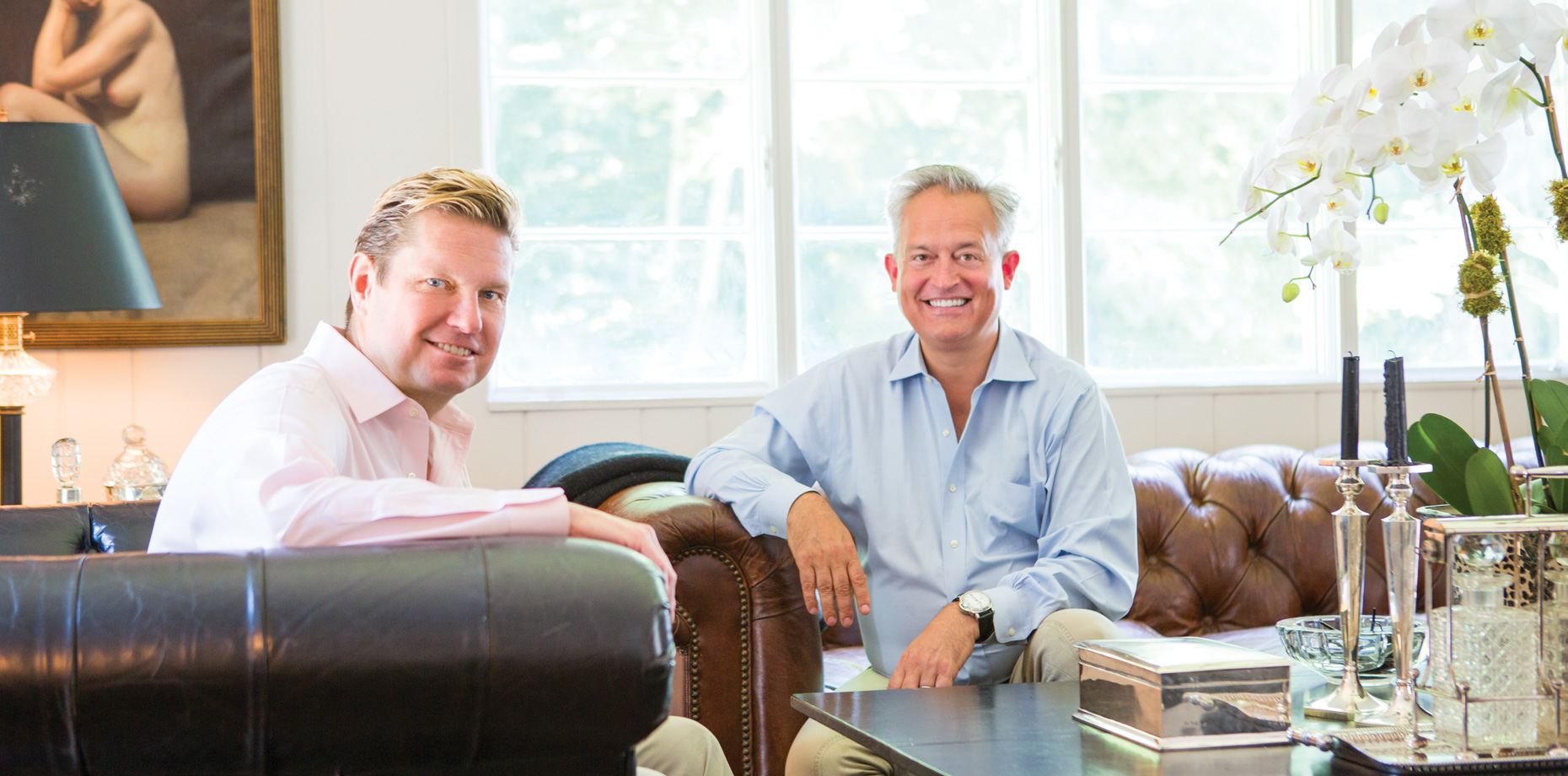
A Visit to Hunter Moon’s Barn
Mark’s training barn is just minutes from his house. It affords him the opportunity to spend a comfortable amount of time with his horses while managing a flourishing business in Manhattan.
Much like other properties in Locust Valley, Hunter’s Moon Farm has a colorful past and a promising future. The farm dates back to the 1920s and has passed ownership several times. The current owners have held the property since 1952, but it had fallen into a state of disrepair.
Six years ago the owners hired Jennifer Griffin as Hunter’s Moon business manager. Her job was to transform the run-down farm into a successful training barn. From all accounts it appears that she has met with remarkable success in a short span of time.
Jennifer grew up riding and loved spending time with the horses, never outgrowing them. She spent years traveling to the big horse shows, working for such equestrian champions as Ian Millar, Eric Lamaze, and Tim Grubb. Her travels took her throughout the U.S., Europe as well as to the Sydney Olympics in Australia, but after living out of a suitcase for 300 days a year, she took the plunge and accepted the business-manager offer.
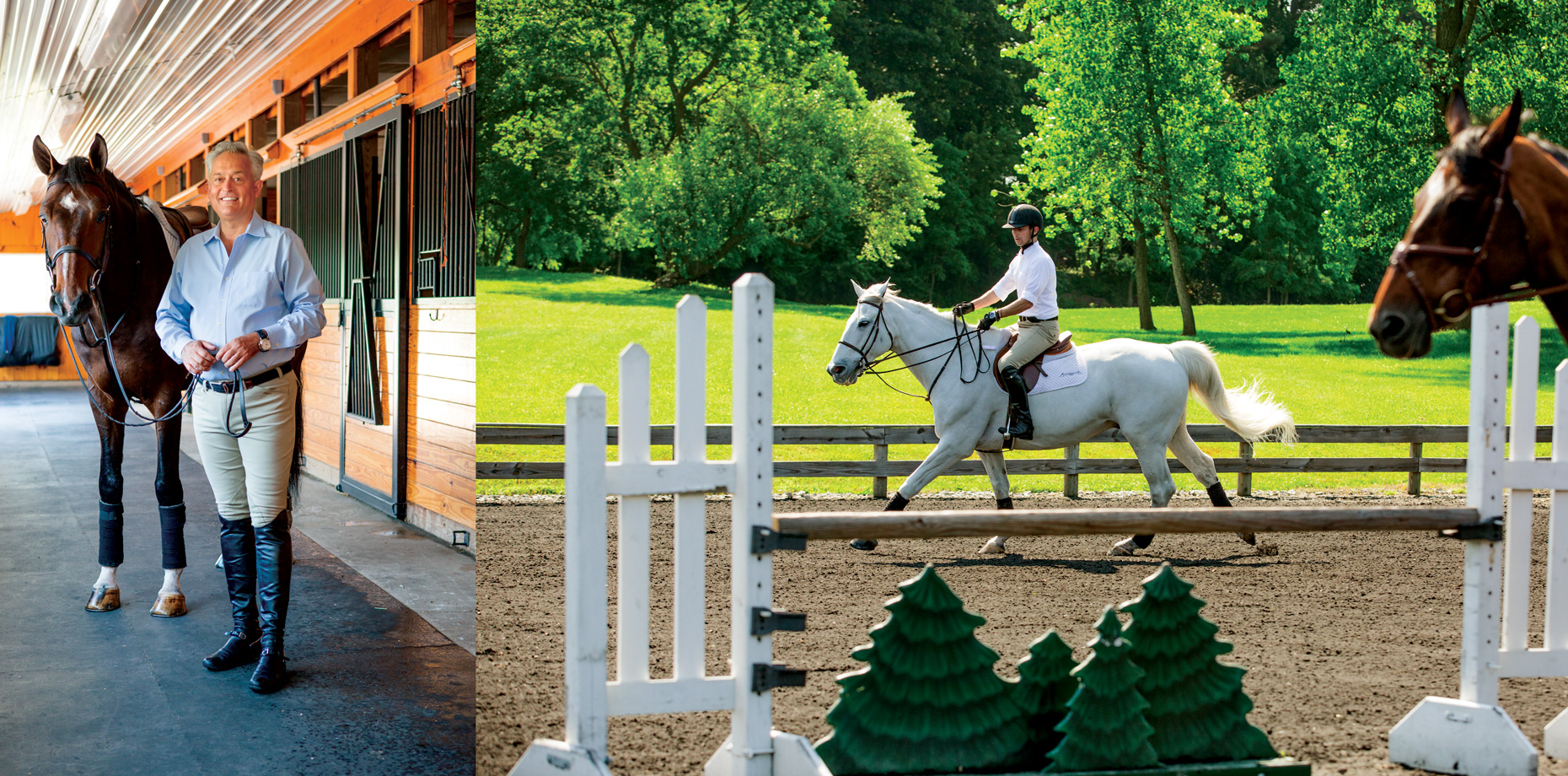
“It’s a challenge to take a project like this and turn it into something,” said Jennifer. “It’s been a huge learning curve, and I’ve learned so much about the business. I enjoy that I don’t have to be on the road as much.”
The facilities, which now include 80 stalls, are new and impeccable. The barn’s layout mimics the original footprint of a horse-racing barn, with stalls back-to-back and a landscaped center courtyard.
Unique to this barn is its setting. It is an amazingly short distance to Manhattan or the Hamptons, allowing busy commuters to fit in a ride before work or on their way to a weekend at the beach. There is a serenity at the barn that doesn’t seem possible given its proximity to the nearby hustle and bustle.
The ultimate feature of this barn is its access to the adjoining Muttontown Preserve (see below.) Miles of horse trails meander through 600 acres of land rich with intriguing history and romantic estate ruins—all nostalgic evidence of a bygone era.
It seems country life agrees with Mark. He has an idyllic balance in his life—spending time with his horses, training and riding with friends at the barn, enjoying the social scenes of New York City and Locust Valley, and keeping up with the growing demand for the beautiful clothing and accessories of Badgley Mischka.
Muttontown Preserve
The Muttontown Preserve, originally known as Knollwood, was purchased by Charles I. Hudson in 1900 for the purpose of raising his prized cattle. To house his extensive collection of art and furnishings Hudson constructed an elaborate estate ornamented with terraces, sunken gardens, and imaginative paths that wound their way through the enchanting property.
The estate passed hands several times before King Zog of Albania purchased Knollwood in 1951. When U.S. immigation policies and property tax laws prevented him from setting up a planned feudal kingdom there, he abandoned the idea. Zog never visited the property and ended up selling it in 1955.
For years the estate was left to deteriorate and fall victim to vandals.
The final owner was Lansdell Christie, a West Point graduate and founder of the Liberia Mining Company. By then the house was derelict and had to be demolished. Most of the other structures on the estate were also torn down. Christie made vast improvements to the property, planting trees, wheat, corn, and feed grains and clearing bridle paths. Shortly after his death, Christie’s widow, determined not to sell to developers, sold or donated 550 acres to Nassau County. The areas is now known as Muttontown preserve.
